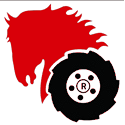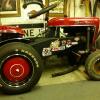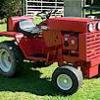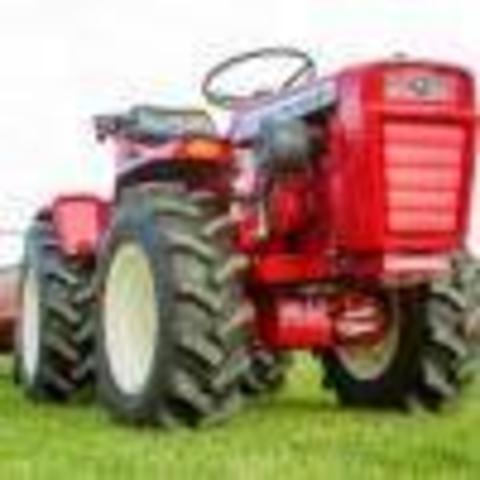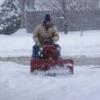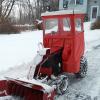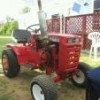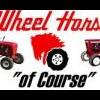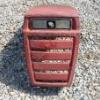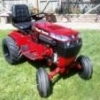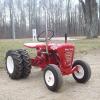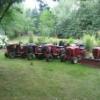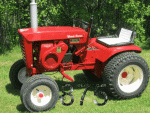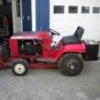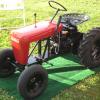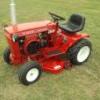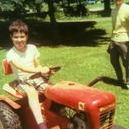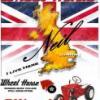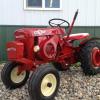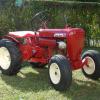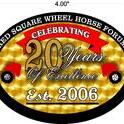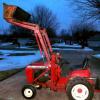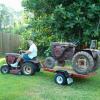Leaderboard
-
in Posts
- All areas
- Markers
- Marker Comments
- Marker Reviews
- Articles
- Article Comments
- Article Reviews
- Classfieds
- Classified Comments
- Classified Reviews
- Wiki's
- Wiki Comments
- Wiki Reviews
- Blog Entries
- Blog Comments
- Images
- Image Comments
- Image Reviews
- Albums
- Album Comments
- Album Reviews
- Files
- File Comments
- File Reviews
- Posts
-
Custom Date
-
All time
November 28 2011 - January 16 2026
-
Year
January 16 2025 - January 16 2026
-
Month
December 16 2025 - January 16 2026
-
Week
January 9 2026 - January 16 2026
-
Today
January 16 2026
-
Custom Date
01/22/2014 - 01/22/2014
-
All time
Popular Content
Showing content with the highest reputation on 01/22/2014 in Posts
-
4 points
-
3 pointsI have a 56" blade that came with my 18 auto and has never really been complete for the last 3 years. After losing my job and home I have the time to mess with the tractor and with the help of my Dad its just about done. We tore all the cob jobbed stuff off of it and got it back to the way the factory intended... I got a handle off and we are at the point now where we need to fab the rod that goes from the handle to the blade to angle it. I was wondering if anyone that has this plow could measure the overall length of the 5/8 rod and also measure to where the little kick is on it that angles it up so that the rear bend matches up with the hole in the angle handle mechanism. Its #24 on the diagram and is called the blade control rod….Its close to the last thing I need to do to get her ready to plow and I sure could use that measurement rather than trial and error in -21 degree wind chills. My Dad is 74 and it seems no matter how much I yell at him to get inside, he likes to be out there with me... Thanks in advance for any info…..
-
2 pointsI use a hole saw and 1/2 drill motor to make um New orifice.The trick is to use the hole saw you want with the existing hole size inside the first one.Example-if you have a 4 1/2 hole and you need a 5 ,you twist the 5 on the arbor first then twist the 4 1/2 on and you have a pilot guide built right in.Other wise your chasing your tail tryin to get that 5 started!
-
2 points10 feet should run about $20. NAPA around here is $18. When you make up the new chain, take five more minutes to make up your "spare" chain. I take the second one and put it in a zip lock bag with a couple of extra master links. I know that the chain will never break unless its freezing cold and I have a lot of snow to move. The last thing I want to do at that time is count links and cut chain. Keeps the blood pressure a little lower when the @#%& hits the fan. It's cheap insurance. You did better than us, I only got about 6" here in CT.
-
2 pointsThanks for your visit to the confessional Mike re owning two Teckies. I have a 19" Flymo hover mower with steel blades that dates back to about 1972 (did you have these in the US?). Powered by a vertical shaft 2 cycle Tecky it still runs and mows some of my lawn starting on the second pull. Only two things destroyed those engines - no oil in the gas or hitting something big with the blades and bending the crank. Must have well over a thousand hours on it. Andy
-
2 pointsHey...that's a trick question. They're all different parts.
-
2 pointsHi James, welcome to RedSquare. You hit the nail on the head, you are going to have FUN!!!! My tractor provides me with endless fun and relaxation. I have to pretend that I'm doing work when I'm on it so the rest of the family thinks I'm working, but it is all for fun. Here is a suggestion, when you are riding around, try not to smile too much, or they will think that you are having too much fun and will look for other chores for you to do. Don't ask me how I know this, but it is a fact. I have a question that you might be able to answer. My tractor being assembled here in the states does not have any metric nuts and bolts on it. Was your tractor assembled over there, and if it was, did they convert over to metric hardware in assembly? Rick
-
2 pointsBeings you got that smart phone you need to capture some of those moments (of your Dad and son both working on, has got to be cool) so you can look back when you are your dads age. Hint, hint Always nice to have pictures
-
2 pointsBattery life can be enhanced with a trickle charger (about 2A ) but if used extensively the trickle charge itself will sulphate the battery. This happens when the H2SO4 loses a charged particle and becomes an insulator rather than a conductor. The electrolyte (liquid conductor) mixes with both conductor and insulator thus reducing the effectiveness of the charge. As the trickle charge continues the spectrum of the insulator grows and starts to take over and in time you have a dying then dead battery. Auto style batteries take on and deliver huge amounts of electrons and a lead acid battery can be considered dead at 10 V. The industry also has and uses deep cell batteries. Deep cell technology is different than auto technology but the deep cell knowledge is very helpful to the auto section. Keep your tractor or auto battery fully charged with a trickle charger, yes. But every so often charge that battery with 10A or more then trickle. Most importantly about 2x or 3x a year equalize that battery. By charging at a higher current 50A for a short time. The battery will get warm and the electrolyte will bubble as it accepts many amperes. For the first time do this for a minute, feel the battery for heat. Test the electrolyte with a temperature battery hydrometer ($10), then test the open circuit battery for terminal voltage. The VDC will go up, let sit for an hour and retest. A good battery at any temperature after a complete charge to float voltage should read at least 12.7 VDC. Readings will be at least 13 VDC and never higher than 15 VDC. Battery equalizing can be done more often, but testing the wet acid battery with a hydrometer is a must along with a DC voltmeter. It is vital to learn how these tools work and it is vital to use them. Too much over charging equalization is bad. Hydrogen gas is formed, sparks are possible, over heating is able to be done and all this can produce an explosion. Remember that the battery is an enclosed container whether the cells are open or not and the battery is a time bomb. So wear protective gear, eye glasses and when equalizing a battery remove it from the vehicle, cover with a leather blanket and never leave the equalized battery alone. Since they are small 20-50 AHr time the equalization period 1 minute, 90 seconds then stop, feel, smell, look and test. It takes time and a lot of safety precautions, no kids, no pets, no open lights, BE PRUDENT, BE SAFE. BE DILIGENT If you decide to do this PITA work it will pay off with a good battery for about 10 years. Also at the same time clean, secure, clean again the battery itself, the container, the wires, the cables, the connections, test the starter and the starter relay (contactor). The starter motor must be tested under an equivalent load to the ICE, internal combustion engine. Cold destroys the ampacity of a battery, the colder the smaller the battery. In very cold -40 FC, the battery is 50-60% less than at 21C or room temp. With electrolyte being closer to water or a specific gravity of 1 it freezes, at 1.25-1.3 the battery cell is good, won't freeze up. Keep your battery clean connection tight and electrolyte as an acid and top up your wet battery with pure water, distilled or RO filtered water. And if in the winter you top up your battery make sure you mix that pure water with the battery acid or it may freeze.
-
2 pointsChasm...now that is what I am talking about!!! OMG...those pictures are great...no bugs!!! Thanks Mate.. It's sooner then you think ...
-
2 pointsRound Two. I am very impressed how this old horse runs. 8 years ago it was all kinds of trouble, now, its like a new tractor. I'm thankful for tearing into and just starting all over with the wiring , fuel lines, carb , governor and so on. Not to mention all the great info hear. Its 10 degrees. Fired right up , left it warm up, open the throttle and it never misses a beat. Not a single hiccup.
-
2 pointsNice job. Looks like the same as the one I'm working on except sheet metal and front bumper, no power steering and a different trans. This one is painted orange, has an id tag riveted to the right fender and a tubing seat frame. Gut feeling is that it was born as a MDOT tractor for the state, but will probably never know as the po has passed. Craig, I'll get some pics tomorrow. But not close enough to show a couple runs in the primer from the rookie spray jockey! I may also get a few of the building's owners toys.
-
2 pointsFiring up the 1977 B-100 to get started on the 4" now, 8" to 10" total to come later. Pictures will follow. So, here's the old man all bundled up in his snow suit. The 1977 B-100 has been sitting out all winter, just covered with a tarp. As I have said before, it never fails me. I grabbed the video camera and started to take a video after I started it. Don't you just love the sound of a properly tuned Kohler singing in the snow? View from the drivers seat as I plow snow in 3rd gear.
-
1 pointHow many here ride their tractor up the ramps and how many walk it up? How many have had a ramp kick out or the tractor come off the ramps while loading with you on it? Did you learn anything? I walk the tractor up in 1st gear while walking beside it. When it gets in the bed I just slap it out of gear then shut it off. I used to walk behind the tractor until one time I slapped it too hard and put it into reverse. Next thing I knew, the tractor was pushing me backwards as it came back down the ramps. So, being that it out weighed me I let it do what it wanted. I then tried it again, walking next to it, and didn't slap it quite as hard. I guess if I was a tractor, I'd try to run over the SOB that slapped me too.
-
1 pointThis tractor and I have a little history together and another member did a thread in the resto forum on it a few years ago but before I say more...How many different parts can you find on this tractor ?
-
1 point
-
1 point
-
1 pointGot her running today...runs great. Just have to paint my wheels and buy a couple parts and I will start putting it back together.
-
1 pointI too am a brick layer,stone mason ,concrete former,placer,I work with guys that get cracked fingers bad,i get it from time to time,we use hockey tape on our fingers to seal up the cracks,but nothing works full time,just a break from bricks and then they heal a bit,i empathize with you guys,when it hurts to wash your hands
-
1 pointSeat is off a crapsman and the fuel tank is in the rear. Hydro front pulley. I would have a guess at 9 different tractors
-
1 pointStarted out as a 1977 B-60 8-speed? Garry
-
1 pointGood deal, completely slipped my mind that the nipple could be sacrificial, I was thinking you wanted to get it out without damaging it, definitely the way to go, and you got to beat on something at the same time...... Sent from my iPhone using Tapatalk
-
1 pointWhen I saw this Toro sno-pup I laughed, I think this thing should be in a museum! When I was in the lawn and garden equipment business, we were a Toro dealer back in '72 and we sold a lot of these pups. I noticed that this was the wider one that they offered. We sold more of what I think I remember as being 14" ones, but we sold a few of this size too. I own the much newer version of these now and I really like it. Ours has electric start and I'm very glad as it takes quite a few cranks to start it, but it always starts. Mine probably has a very similar engine as yours does. They've come a long ways in their designs and this version really throws the snow! I have always thought that Toro made the best small snow blowers out there. They just work, and I believe they are the lightest, so they are perfect for small jobs. Thanks for this post, it brought back a lot of good memories! C-85
-
1 pointThat is way to much for the recoil... next without experience these recoils are not for the faint of heart. They do require a little know how to take apart and put back together. Also be advised that these recoils are like the worst... they work great for a while and then give up the ghost quick. If the tractor is a runner, I personally would locate a Fairbanks or equivalent.
-
1 pointhodge71 is correct Craig, heat is about the only chance you have of getting it out, without damaging the muffler. When you get it good, and red you might try using an oil filter strap wrench on the large portion of the muffler, as metal is soft when its that hot, and if you use pliers on the nipple area it might cave it in. Matt
-
1 pointNo he's not Craig…he couldn't turn on a computer if his life depended on it…probably would look for a hand crank somewhere. I laugh at the amazement on his face when I'm over there with my laptop and I'm using my iPhone as a wifi hotspot to get on here to look at something we have a question on. He can't believe all this stuff comes through the air… He's a great Dad. Even welded the cast iron on my block where I broke the ear off the exhaust port. Local engine shop told me $400, it took us about 15 minutes and 5 bucks. Plus I didn't have to take the engine out of the tractor. I now have a complete sealed and working stack on the 18. Its been great to see him and my son working together on it too.
-
1 pointReminds me of a few years back, we had a forcast for 12" snow, so I went out the night before and mounted the blower to my C-141 and backed it in so she was ready to go. Next morning I looked out to a whole bunch of snow, yippee! I got all bundled up, trudged out to the "horse barn", fired up the C-141 and took off throwing snow for who tied the pup! Went about 25' and the drive belt to the blower broke!!!!!!!!! Couldn't get out to go buy another one, so backed the C-141 into the barn, took the blower off and mounted the trusty blade. We got the job done, but took a lot longer and a lot more effort! What's that old saying, "the best laid plans of mice and men"!
-
1 pointils sont tres mauvais pour les terres,ils ne mangennt pas seulement tres jeunes plantes,,ils arrachent et mangent meme la racines. en plus les excrements de ces oies ne sont pas bonnes pour l`enrichissement du sol
-
1 pointWe could have a snow blade painting contest and then a giant You tube video with about 400 people watching the paint dry and rockin out to some tunes!
-
1 pointOMG,,, did you say Snakes thats it im not comming now in the summer , Lets have the Winter snow party
-
1 pointIt has been a very long time since I have updated this thread. I apologize for that. We are dead in the water right now due to the fact of not having a place to work. That will be changing soon I hope. As I have mentioned previously, our building is under way. I wish I had some good photos to share, but not yet. I do know that the walls are up and the trusses have been set. We are getting oh so close. The updates I have been receiving have been very exciting. I have learned that a hoist will be placed in the ceiling to help with removal of engines and for other various tasks. They are truly thinking of everything to make this a great place to work! Since time is going to be our enemy I made the executive decision to get this machine powder coated. After telling the story to our friend that powder coats our machines he agreed to give us a deal. On top of that he invited the club to come out and he will show them how to apply the powder and do it themselves! We will then push the rack in to the oven and in a short amount of time we will get to see the finished product. How cool is that?!?!?!? I am chomping at the bit to get cranking on this again! Hoping to update you all again soon!
-
1 point
-
1 pointGot the ranger motor back together today, looks good, we'll find out how it runs tomorrow. lol. Should be a good motor, has all new gaskets/ seals, new carb, piston, rod,rings, and ignition stuff.
-
1 pointHi Swemill, I looked at your loader setup on your profile. You do incredibly nice work! Glad you posted it on this thread! I know Diesel Cowboy and I would like to get all our members who have or had an FEL on their "horse' to post them if they got em'. Especially home-made setups and conversions from other manufacturers.
-
1 point
-
1 pointI'll be heading back down this year Terry. Thanks so much for doing this for us.
-
1 pointOk it would have to have a heated barn to socialize in and watch Steve show us his off season Rock-n-rye making skills.
-
1 point
-
1 pointHere's a banana walking back and forth carrying parts!
-
1 pointNot like the "regular" loaders you have here but it's a kind of loader and it works real good!
-
1 pointShe plows like a champ!!!! Driveway has already been plowed 2x! Patience Stormin, I am sure you will get your share Now I need one of them "fancy" plastic cab covers...man it is cold out there Semper Fi
-
1 pointI just subscribed a couple weeks ago. I met the managing editor at last years WHCC show in PA She is a member on this forum as well. waiting patiently for my first issue. tractorchick
-
1 pointIn his off season, I have Rudolph to help me out... -BK
-
1 pointA little late to this thread, but finally got some good pics of my snow herd. Have a c141 with blower, 702 with blade, 401 with blade, and a 867 with grader blade. Whatever these can't handle my dad's 06 Silverado does. lol
-
1 pointMy snowfighting equipment set up for this year's battle's! The 1967 Wheel Horse Lawn Ranger, L-157 with the STR-324 32 inch Snowthrower The 1963 Wheel Horse 633 with BD-4262 - 42 inch Snowplow/Dozer Blade
-
1 pointI use a 1995 520H with a 42 inch tall chute blower and a 1993 416H with a 48 inch blade. Edwroy
-
1 pointWhat another exciting night of tractor club! Club meeting #3 was a huge success! The kids were ready to work and get dirty, and that they did. We had a few club members absent due to previous commitments. Those that were in attendance did not disappoint. Breaking down the tractor continued tonight and the hand sanding has commenced. I am very proud of the kids for their patience and persistence. They are understanding that this will be a long, but rewarding chore. Hope you enjoy some of the photos from tonight!
-
1 pointLeave it to the very generous and thoughtful Terry Dennis to come up with a new logo for our garden tractor club! His creativity and generosity amazes me and I greatly appreciate his friendship! Here is our new school garden tractor club logo....... Thanks again Terry!
-
1 pointWell operation Harrison Elementary School Tractor club has begun! I took an early morning drive yesterday to meet David Rice (RCTruckdaddy) I believe that is his RS name. He was nice enough to meet me half way. We swapped the tractor over on to my trailer and then had a great conversation. Headed back home and let her sit. She is a great candidate for the kids to get dirty with. Most of the parts it needs I believe I have on the shelf, but there are few things I don't think I have so I may ask if anyone has those items available for a small fee. Many folks that follow along on my Facebook page "Wheel Horse Junkies" have jumped in to lend a hand. Terry Dennis (Vinylguy) has willingly offered up a new set of decals for the machine. Bud Andrews is going to get me squared away with a new battery when the time comes. Daniel Aungst is sending a gift card to TSC to help me with costs of materials. I am trying to work with some local groups that would be willing to chip in as well so I don't have to cover the entire project out of my own pocket. Our first meeting is this Wednesday after school. We will be focused completely on safety as I continue to round up the much needed parts for this. The kids will get a chance to see the tractor for the first time and we will talk about how we are going to tackle the project. It should be a lot of fun!!!! Here it is after David so proudly presented it to me. Thank you again everyone that has given encouragement!
-
1 pointThat is a great idea, we might want to see if it could be a webcast to members who can't make the big show also.
-
Newsletter

